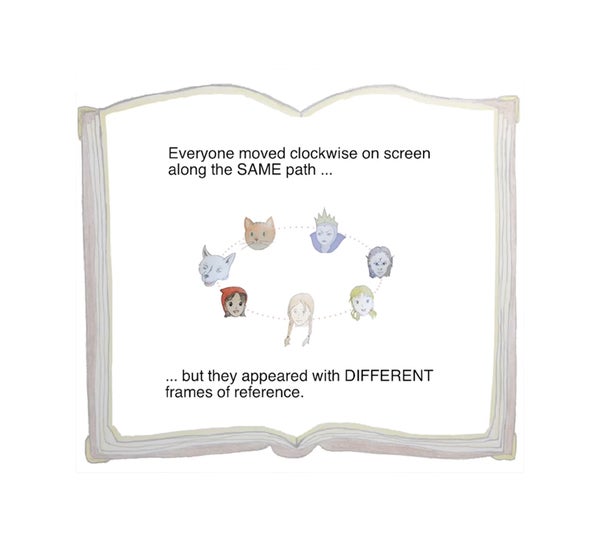This article was published in Scientific American’s former blog network and reflects the views of the author, not necessarily those of Scientific American
Worldwide voting for the 13thBest Illusion of the Year Contest will take place on the contest’s website, from 4pm EDT on October 4th to 4pm EDT on October 5th.
The Top 10 finalist illusions, selected from dozens of entries from all around the world, will be publicly revealed at that time!
The Best Illusion of the Year Contest, hosted by the Neural Correlate Society, is now an online competition: anybody with an internet connection (that means you!) can vote to pick the Top 3 Winners from the Top 10 finalists.
On supporting science journalism
If you're enjoying this article, consider supporting our award-winning journalism by subscribing. By purchasing a subscription you are helping to ensure the future of impactful stories about the discoveries and ideas shaping our world today.
The 1st place winning illusion will receive a $3,000 award, the 2nd place winner a $2,000 award, and the 3rd place winner a $1,000 award.
This year’s Contest coincides with the release of Champions of Illusion: The Science Behind Mind-Boggling Images and Mystifying Brain Puzzles. “Champions” features many of the best illusions from the Contest, and their neural underpinnings

Credit: Champions of Illusion Book
Champions of Illusion is available for pre-order. Proceeds will support future editions of the Best Illusion of the Year Contest.
Leading up to this year’s Contest, and to the release of Champions of Illusion, we will use this space to showcase dynamic illusions from previous editions of the Contest, as well as honorable mentions from the current competition.
Our first Honorable Mention of 2017 was submitted by Marco Bertamini and Andrew Irving, of the University of Liverpool, UK. Bertamini and Irving’s illusion, entitled “Moving Fairytales,” proves that motion perception depends on our frame of reference. In their video, classic characters from fairytales move along seemingly disparate paths. In reality, all characters follow the same precise trajectory: only their frames of reference change. “It is rather hard to believe that they all move the same way because the effect is so strong,” said Bertamini.
Bertamini’s son, Federico, age 11, provided the voice-over for the video.
Bertamini answered a few questions about their illusion’s discovery and significance (edited for clarity):
Illusion Chasers: How does your illusion work, and what does it tell us about the human brain/mind
Bertamini: Perception is always the result of perceptual organization. Structure is not just there, it is something the brain imposes on the incoming information. Motion is a great example of perceptual organization. These motions are all organized differently, because they are affected by different frames of reference.
Illusion Chasers: What was the inspiration for your illusion?
Bertamini: Many years ago, I read a fascinating article. It described a dot that could be seen as moving clockwise or counterclockwise. But this paper had just diagrams, and it was hard to appreciate the effect on the printed page. It was only after I programmed it on my computer that I really went "wow".
Illusion Chasers: How does your illusion relate to everyday experience?
Bertamini: Perceptual organization has its own rules, and some frames of reference will impose themselves. Yet, attention can play some role within these rules, just like we can learn how to reverse a Necker cube by paying attention to one perceptual interpretation versus another.
